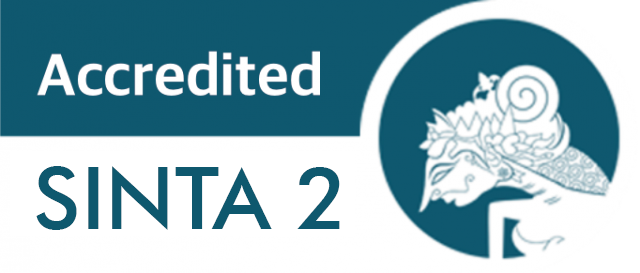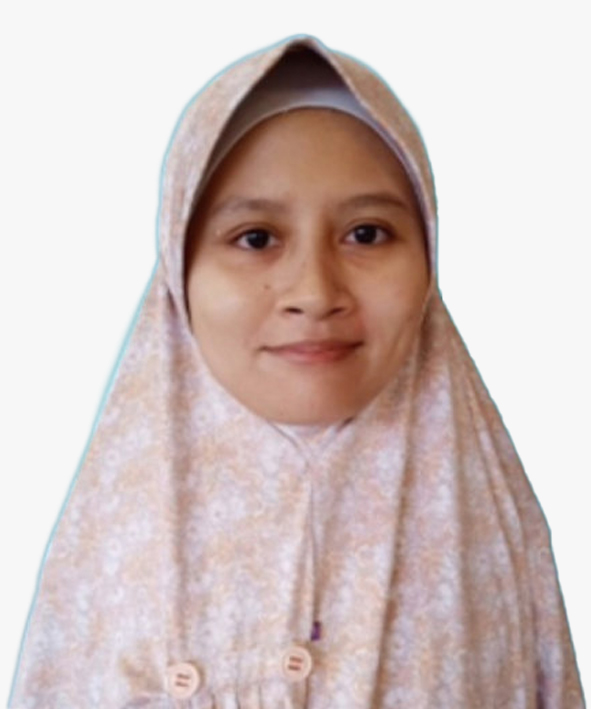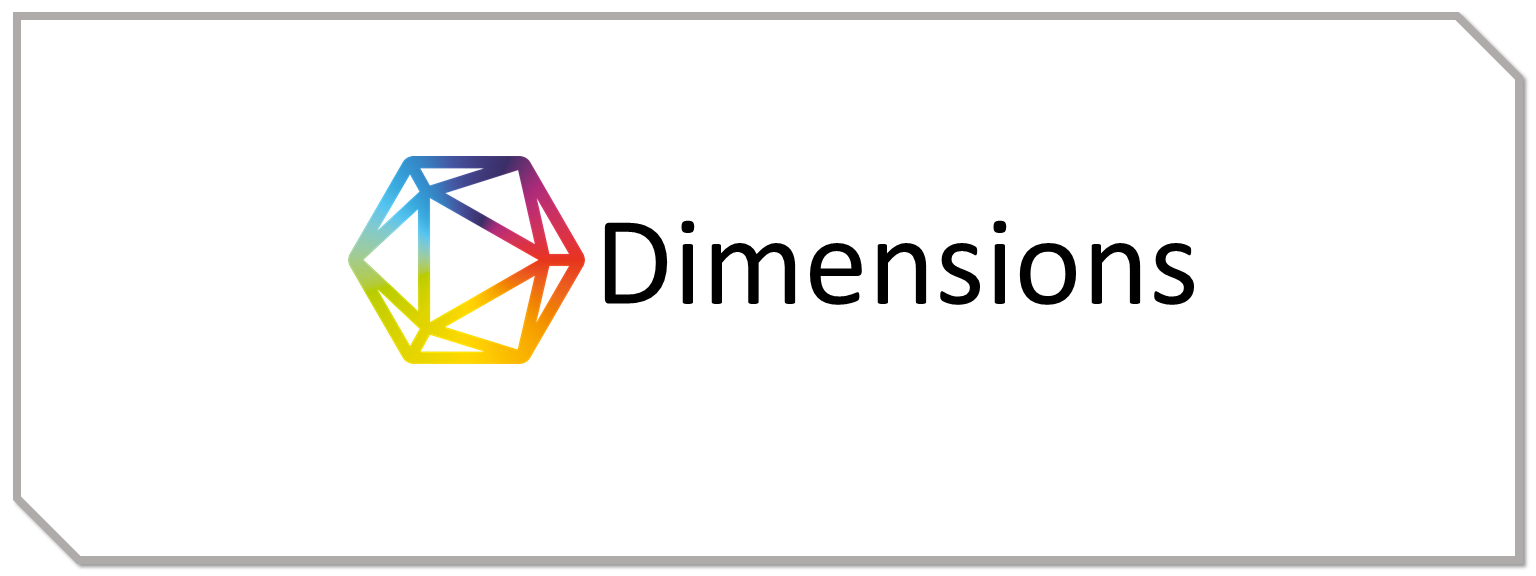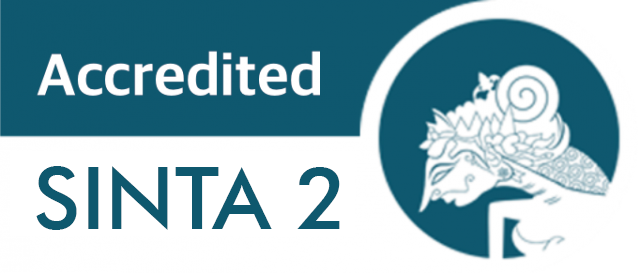Overview of Postpartum Depression in The Sungai Durian Public Health Center Area
Introductions: Postpartum depression is a mood disorder that occurs after childbirth, with symptoms lasting more than six months. The prevalence rate of postpartum depression globally is 17.22%. The cases of postpartum depression in Asia are quite high, ranging from 9.29% to 60.93%. The frequency of this disorder in Indonesia is between 11% and 30%. Postpartum depressive disorder can affect the health of the mother, child, and husband. This influence can cause behavioral and emotional problems and even death. This study was conducted to determine the description of postpartum depression in the Sungai Durian Health Center area. Methods: This study was descriptive, with a cross-sectional approach followed by 104 research respondents. Respondents completed an informed consent sheet, personal identity, and the Edinburgh Postnatal Depression Scale (EPDS) Questionnaire. The data was analyzed using the univariate analysis method in Microsoft Excel 2019. Results: This study shows that postpartum mothers who do not tend to experience symptoms of postpartum depression (EPDS score <10) amounted to 66.35%, and postpartum mothers with a tendency to experience symptoms of postpartum depression (EPDS score ≥10) amounted to 33.65%. The results showed that mothers who tended to experience symptoms of postpartum depression were mostly in the age range of 20-35 years, had a high school education, had a family income less than 2,600,000/regency minimum wage, were housewives, were married, were multiparous, had a vaginal delivery, and were getting social support. Conclusion: Postpartum mothers in the Sungai Durian Health Center area do not tend to experience symptoms of postpartum depression.
Introductions
The rate of depression in Indonesia increased by 4% from 2013 to 2018 and is more prevalent among women[2],[4]. Based on data from Riskesdas in 2018, the incidence of depression in West Kalimantan was higher in women than men at 7.68%[5]. Kubu Raya Regency is the second-highest area with the incidence of depression in West Kalimantan, based on data from Riskesdas in 2018[5]. Women are at very high risk of having depression because of the many hormonal, physical, emotional, and psychological changes experienced, especially after childbirth[6]. Women during pregnancy will experience an increase in estrogen and progesterone hormone levels. These changes contribute to emotional problems in women and cause postpartum depression[7].
Postpartum depression is a form of depression that occurs around the time of childbirth or within four weeks following delivery[8],[9]. The global prevalence rate of postpartum depression is 17.22%[9]. The prevalence of postpartum depression in Asia varies significantly, ranging from 9.29% to 60.93%[9],[10]. The prevalence of this illness in Indonesia ranges from 11% to 30%[11]. This disorder is frequently underdiagnosed, as women may perceive the symptoms of postpartum depression as typical, may not exhibit overt signs of depression, or may fear societal stigma associated with a diagnosis, leading them to refrain from discussing their mood with family or healthcare providers. In 2020, postpartum depression was anticipated to be among the three most prevalent health issues globally. Postpartum depression can affect breastfeeding behaviors, childcare, and mortality rates among mothers and children[12],[13],[14].
Methods
This study was registered with the Ethics Committee of the Faculty of Medicine, Universitas Tanjungpura, by issuing a certificate of passing ethical review No: 5690/UN22.9/PG/2023. The method used in this study was a descriptive study design with a cross-sectional approach. One hundred and four respondents participated in August 2023 around the Sungai Durian Health Centre. The study employed the accidental sampling method and adhered to the inclusion criteria previously set by the researcher. The sample consisted of postpartum mothers aged 1-12 months who can read and write in the Sungai Durian Health Centre area. Mothers under psychiatric care and those unwilling to participate were excluded. Primary data was collected through a questionnaire completed by the study participants. The EPDS (Edinburgh Postnatal Depression Scale) was used as the questionnaire in this study. The data was analyzed using the univariate analysis method in Microsoft Excel 2019.
Results
This study indicates that postpartum mothers who do not tend to experience symptoms of postpartum depression (EPDS score <10) amounted to 66.35%, and postpartum mothers with a tendency to experience symptoms of postpartum depression (EPDS score ≥10) amounted to 33.65%. The results showed that mothers who tended to experience symptoms of postpartum depression were mostly in the age range of 20-35 years, totaling 26 respondents (25.00%); the last high school education amounted to 17 respondents (16.35%); family income less than 2,600,000/regency minimum wage amounted to 27 respondents (25.96%); housewives amounted to 33 respondents (31.73%); marital status married amounted to 34 respondents (32.69%); the number of parity multiparous amounted to 19 respondents (18.27%); vaginal delivery amounted to 22 respondents (21.15%); and getting social support amounted to 33 respondents (31.73%).
| Category | Total | Presentation (%) |
|---|---|---|
| No Tend to Experience Symptoms of Depression (EPDS < 10) | 69 | 66.35% |
Tend to Experience Symptoms of Depression (EPDS ≥10) | 35 | 33.65% |
| Total | 104 | 100% |
| No. | Category | Variable | No Tend to Experience Symptoms of Depression | Tend to Experience Symptoms of Depression | Total | ||
|---|---|---|---|---|---|---|---|
| N=69 | % | N=35 | % | N=104 | |||
| 1 | Age | <20 years | 0 | 0.00% | 3 | 2.88% | 3 |
| 20-35 years | 57 | 54.81% | 26 | 25.00% | 83 | ||
| >35 years | 12 | 11.54% | 6 | 5.77% | 18 | ||
| 2 | Education | No Education | 0 | 0.00% | 1 | 0.96% | 1 |
| Elementary School | 5 | 4.81% | 6 | 5.77% | 11 | ||
| Junior High School | 20 | 19.23% | 7 | 6.73% | 27 | ||
| Senior High School | 28 | 26.92% | 17 | 16.35% | 45 | ||
| Diploma/Bachelor Degree | 16 | 15,38% | 4 | 3,85% | 20 | ||
| 3 | Family Income | Less than 2,600,000 ( | 36 | 34.62% | 27 | 25.96% | 63 |
More than 2,600,000 (>regency minimum wage) | 33 | 31.73% | 8 | 7.69% | 41 | ||
| 4 | Occupation | Working | 7 | 6.73% | 2 | 1.92% | 9 |
| Non-working/ Housewife | 62 | 59.62% | 33 | 31.73% | 95 | ||
| 5 | Marital Status | Not Married | 0 | 0.00% | 0 | 0 | 0 |
| Married | 69 | 66.35% | 34 | 32.69% | 103 | ||
| Divorced | 0 | 0.00% | 1 | 0.96% | 1 | ||
| 6 | Number of parity | Primiparous | 13 | 12.50% | 16 | 15.38% | 29 |
| Multiparous | 56 | 53.85% | 19 | 18.27% | 75 | ||
| 7 | Type of Labour | Vaginal delivery | 55 | 52.88% | 22 | 21.15% | 77 |
| Caesarian Section | 14 | 13.46% | 13 | 12.50% | 27 | ||
| 8 | Social Support | Yes | 69 | 66.35% | 33 | 31.73% | 102 |
| No | 0 | 0.00% | 2 | 1.92% | 2 |
Discussions
- Age
Mothers in the age range of 20–35 years can tend to suffer from postpartum depression because some mothers are unable to adapt to physical and psychological changes after childbirth[11]. These changes include changes in reproductive organs, breast shape, and weight[15]. The high incidence of postpartum depression in mothers aged 20-35 years can also occur due to other factors, such as socioeconomic problems, especially in developing countries [16][16]. In this study, it was also found that of the three respondents aged less than 20 years, all tended to experience symptoms of postpartum depression. This range of age is included
G. Hadisukanto and S. Elvira, Buku Ajar Psikiatri, 3rd ed. Jakarta: Badan Penerbit FKUI, 2017.
H. Maulana, M. Mawarpury, and E. Fourianalistyawati, “Prevalensi Depresi Pada Wanita Dengan Riwayat Keguguran: Studi Berbasis Data IFLS-5,” Jurnal Psikologi Ulayat, vol. 10, no. 1, pp. 23–38, 2022, doi: 10.24854/jpu469.
World Health Organization, “Depressive disorder (depression),” WHO. Accessed: Jul. 09, 2023. [Online]. Available: https://www.who.int/news-room/fact-sheets/detail/depression
Kementerian Kesehatan Republik Indonesia, “Laporan Nasional Riskesdas 2018,” 2018.
Kementerian Kesehatan Republik Indonesia, “Laporan Provinsi Kalimantan Barat Riskesdas 2018,” 2018.
S. Mughal, Y. Azhar, and W. Siddiqui, “Postpartum Depression,” StatPearls [Internet]. Treasure Island (FL): StatPearls Publishing.
B. Sadock and V. Sadock, Kaplan & Sadock’s Synopsis of Psychiatry: Behavioral Sciences / Clinical Psychiatry, 11th ed. USA: A Wolter Kluwer Company, 2014.
M. M. Batt, K. A. Duffy, A. M. Novick, C. A. Metcalf, and C. N. Epperson, “Is Postpartum Depression Different From Depression Occurring Outside of the Perinatal Period? A Review of the Evidence,” Focus (Madison), vol. 18, no. 2, pp. 106–119, Apr. 2020, doi: 10.1176/appi.focus.20190045.
M. S. Ekpenyong and M. Munshitha, “The Impact of Social Support on Postpartum Depression in Asia: A Systematic Literature Review,” Ment Health Prev, vol. 30, no. 1, pp. 1–20, Jun. 2023, doi: 10.1016/j.mhp.2023.200262.
Z. Wang et al., “Mapping Global Prevalence of Depression Among Postpartum Women,” Transl Psychiatry, vol. 11, no. 1, pp. 1–24, 2021, doi: 10.1038/s41398-021-01663-6.
L. Sari, Misrawati, and Y. Rizka, “Gambaran Kejadian Depresi Postpartum di Puskesmas Pekanbaru,” JKP, vol. 11, no. 1, pp. 1–15, 2023.
H. A. Almutairi, S. M. Alyousef, S. A. Alhamidi, and D. N. Almoammar, “Exploring the Healthcare Services’ Contribution to Reducing Postpartum Depression,” SAGE Open Nurs, vol. 9, Jan. 2023, doi: 10.1177/23779608231171780.
Y. L. Lee et al., “Association of Postpartum Depression with Maternal Suicide: A Nationwide Population-Based Study,” Int J Environ Res Public Health, vol. 19, no. 9, 2022, doi: 10.3390/ijerph19095118.
D. A. Salsabilla, H. Prasetya, and B. Murti, “The Effect of Unplanned Pregnancy on Postpartum Depression: A Meta-Analysis,” Journal of Maternal and Child Health, vol. 5, no. 5, pp. 500–513, 2020, doi: 10.26911/thejmch.2020.05.05.05.
D. N. Setiawati, D. Purnamawati, N. C. Dainy, R. Effendi, and Andriyani, “Faktor-Faktor yang Mempengaruhi Kejadian Depresi Postpartum di Kabupaten Bogor Tahun 2019,” Muhammadiyah Public Health Journal, vol. 1, no. 1, pp. 10–16, 2020.
I. Agrawal, A. M. Mehendale, and R. Malhotra, “Risk Factors of Postpartum Depression,” Cureus, vol. 14, no. 10, pp. 1–8, 2022, doi: 10.7759/cureus.30898.
C. Mulyani, A. Dekawaty, and S. Suzanna, “Faktor-Faktor Penyebab Depresi Pasca Persalinan,” Jurnal Keperawatan Silampari, vol. 6, no. 1, pp. 635–649, Dec. 2022, doi: 10.31539/jks.v5i2.3462.
Estiningtyas and Anindhita Yudha Cahyaningtyas, “Determinants of Postpartum Depression In Rural Area, Central Java, Indonesia,” Journal of Health Science and Prevention, vol. 5, no. 1, pp. 49–57, Apr. 2021, doi: 10.29080/jhsp.v5i1.464.
Murwati, S. Wahyuni, and Suroso, “Faktor Determinan Depresi Postpartum di Wilayah Kabupaten Klaten Jawa Tengah,” Jurnal Sipakalebbi, vol. 5, no. 1, pp. 19–31, 2021.
A. D. Sapulette, D. D. Ayawaila, N. C. P. Guntur, B. L. Ingrit, and P. A. Tahapary, “Gambaran Depresi Postpartum di Pusat Kesehatan Masyarakat Binong di Tangerang,” Jurnal Keperawatan, vol. 14, no. 3, pp. 747–752, 2022.
N. K. Gebregziabher, T. B. Netsereab, Y. G. Fessaha, F. A. Alaza, N. K. Ghebrehiwet, and A. H. Sium, “Prevalence and Associated Factors of Postpartum Depression Among Postpartum Mothers in Central Region, Eritrea: A Health Facility Based Survey,” BMC Public Health, vol. 20, no. 1, pp. 1–10, 2020, doi: 10.1186/s12889-020-09676-4.
B. T. Abdiani, “Pengaruh Dukungan Sosial Terhadap Depresi Postpartum Pasca Gempa Lombok,” JIKF, vol. 10, no. 2, 2022.
N. Endah Filaili and R. Widiasih, “Gambaran Risiko Depresi Postpartum Ada Ibu Usia Remaja di Puskesmas Wilayah Garut,” Jurnal Kesehatan Bakti Tunas Husada : Jurnal Ilmu Ilmu Keperawatan, Analis Kesehatan dan Farmasi, vol. 20, no. 2, pp. 269–278, 2020.
I. Nurbaeti and I. Farida, “Kepuasan Pernikahan Berhubungan dengan Depresi Pasca Melahirkan,” Jurnal Keperawatan Silampari, vol. 5, no. 1, pp. 67–73, Aug. 2021, doi: 10.31539/jks.v5i1.1971.
I. Nurbaeti, W. Deoisres, and P. Hengudomsub, “Association between psychosocial factors and postpartum depression in South Jakarta, Indonesia,” Sexual and Reproductive Healthcare, vol. 20, pp. 72–76, 2019, doi: 10.1016/j.srhc.2019.02.004.
A. H. Abba et al., “A Prospective Study on the Incidence and Predictors of Postpartum Depression among Pregnant Women Attending an Antenatal Clinic in Kano, Northern Nigeria,” Open J Psychiatr, vol. 13, no. 03, pp. 207–220, 2023, doi: 10.4236/ojpsych.2023.133017.
S. W. Wang, J. L. Chen, Y. H. Chen, and R. H. Wang, “Factors Related to Psychological Distress in Multiparous Women in the First Trimester: A Cross-Sectional Study,” J Nurs Res, vol. 30, no. 3, p. e210, Jun. 2022, doi: 10.1097/jnr.0000000000000485.
L. Lailiyana and S. I. P. Sari, Modul Pelatihan Penggunaan Edinburgh Postnatal Depression Scale (EPDS) Sebagai Alat Deteksi Dini Depresi Postpartum Bagi Bidan. Pekanbaru: Penerbit Natika, 2021.
N. R. Sinulingga, A. Yanis, and F. T. Anggraini, “The proportion of postpartum depression and its association with mode of delivery and parity,” Science Midwifery, vol. 10, no. 6, pp. 2721–9453, 2022.
J. N. Inekwe and E. Lee, “Perceived social support on postpartum mental health: An instrumental variable analysis,” PLoS One, vol. 17, no. 5 May, May 2022, doi: 10.1371/journal.pone.0265941.
Copyright (c) 2025 Senia Angi Giyandari, Jojor Putrini Sinaga, Mistika Zakiah, Fitri Sukmawati, Alex

This work is licensed under a Creative Commons Attribution-ShareAlike 4.0 International License.
1. Copyright of this journal is possession of the Author, by the knowledge of the Editorial Board and Journal Manager, while the moral right of the publication belongs to the author.
2. The journal allows the author(s) to retain publishing rights without restrictions.
3. The articles are published under a Creative Commons Attribution Share-Alike (CC BY-SA) license. Many research funding bodies prefer the CC BY-SA license because it allows for maximum dissemination and re-use of open access materials. Users are free to share (copy, distribute, and transmit) and remix (adapt) the contribution under this license, including for commercial purposes, as long as they attribute the contribution in the manner specified by the author or licensor.
























